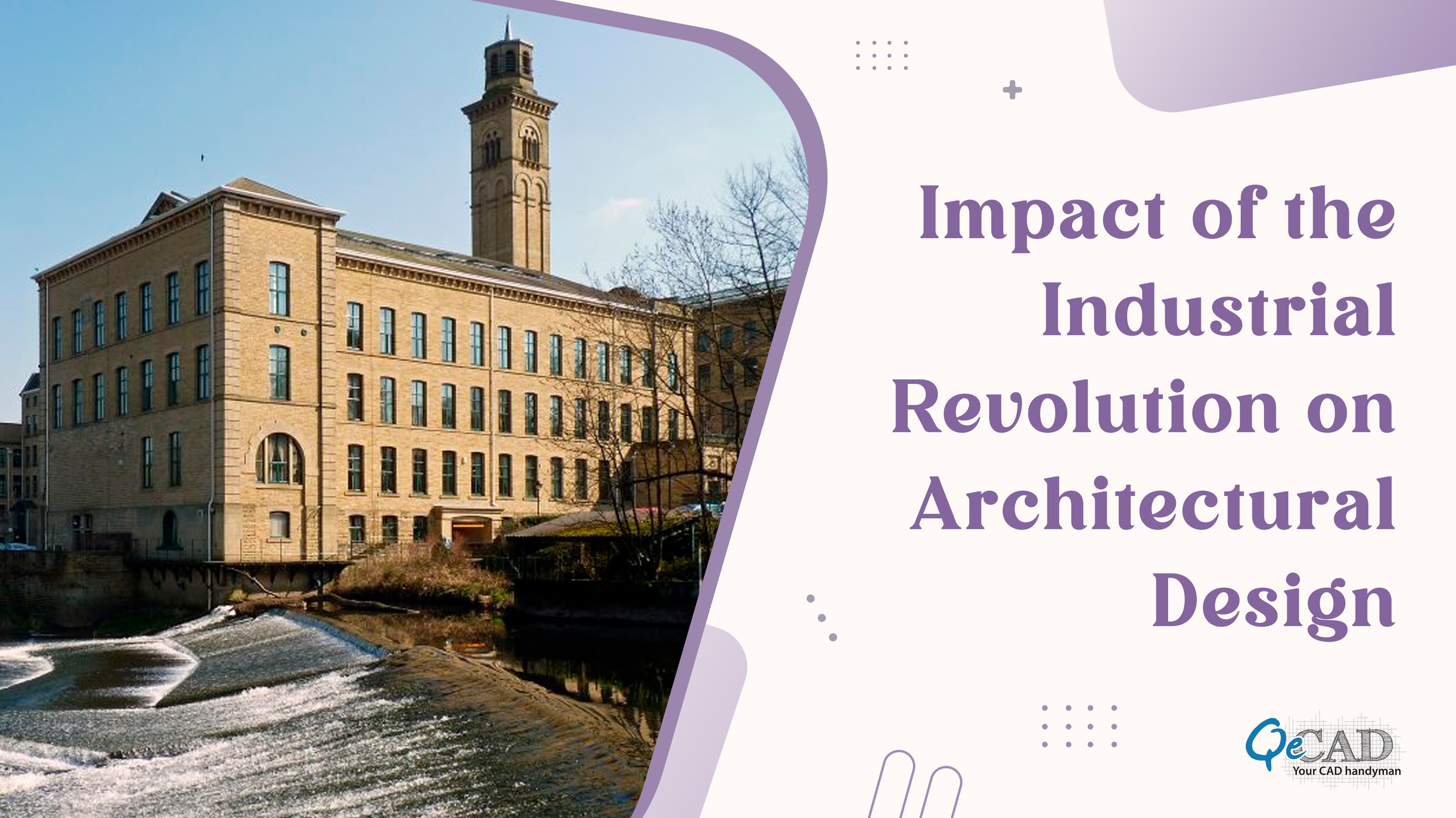Impact of the Industrial Revolution on Architectural Design

Introduction
The industrial revolution, which transformed countries from agrarian to industrial powerhouse, was a significant turning point in human history. While the impacts of this revolution on commerce, travel, and communication are well documented, the impact on architectural design is also substantial but occasionally ignored. As technology and other sectors advanced, architects seized the opportunity to reevaluate their approach to building construction, leading to concepts like Architectural BIM Services and architectural modeling services.
Technological Advancements and Architectural Innovation
During the industrial revolution, there was an explosion in technical development, which had a big impact on architectural design. New building materials including steel and reinforced concrete have revolutionized the building construction industry. As a result of architects' newly discovered capacity to design structures with previously unheard-of heights and spans, skyscrapers and enormous public spaces were created.
Architectural BIM Services: A Revolution within a Revolution
Architectural Building Information Modelling (BIM) Services had been a significant improvement in architectural design at the moment. A digital model of a building that incorporates both its structural and functional elements is created using BIM. This technology-enhanced coordination and reduced errors during the design and construction phases by facilitating seamless communication between architects, engineers, and construction professionals.
BIM permits architects to interactively examine and test out many design options by offering a 3D depiction of a building's components. Making informed decisions early on in the design process and increasing innovation are both facilitated by this. By offering exact documentation and up-to-date information in real-time, BIM has significantly improved project administration and stakeholder communication.
Architectural Modeling Services: Transforming Design Visualization
Architectural Modeling Services, which have a strong connection to BIM, altered the way architects presented their designs. Traditional two-dimensional drawings typically struggle to convey minute particulars and artistic nuances. Stakeholders and consumers can now view a more precise and thorough representation of structures, which better conveys the design intent, thanks to the development of 3D architectural modeling.
Additionally, better client-architect communication has resulted from the utilization of architectural modeling services. Instead of trying to read technical drawings, clients had the opportunity to explore complex 3D models and have a better understanding of the recommended design. This prompted more intelligent comments and adjustments, which finally led to the creation of designs that better reflected what customers wanted.
Urban Planning and the Emergence of New Spaces
Urbanization accelerated throughout the industrial revolution as people flocked to cities in large numbers in search of employment opportunities. This alteration compelled architects to revise their ideas to accommodate the changing needs of urban dwellers. Designing businesses, houses, and public spaces now takes into account issues like population density, sanitation, and transportation.
In response to the demands of the industrial revolution, new architectural typologies, such as warehouses and department stores, were created. Because of their expansive interiors, huge windows, and innovative structural designs, these buildings are distinguished. Functional aesthetics, which combines artistic sensibility with useful design concerns, became a focus for architects.
Sustainable Design and the Industrial Revolution's Legacy
As the industrial revolution progressed, concerns about depleting resources and environmental degradation grew. Environmentally responsible and sustainable practices were becoming more and more important to architects, and this had a long-lasting impact on architectural design. Integration of energy-saving technologies, natural lighting, and the liberation of green space have developed into essential design considerations.
Services for architecture and BIM modeling were essential to this transformation. With the aid of these technologies, architects had the capacity to simulate energy consumption, daylighting, and thermal performance and make decisions that were in accordance with sustainability goals. The industrial revolution's legacy of resource consciousness still has an impact on architectural design, encouraging a commitment to sustainable construction and design practices.
Software for architectural modeling may be used to create detailed building models. These models can be used to provide building documents in addition to explaining and demonstrating an idea to clients. Architectural modeling software can be used to duplicate the functioning of the building, much like BIM software.
The use of BIM and architectural modeling software has completely changed how architects design and build buildings. These technologies enable architects to create more exact and complete blueprints, potentially improving building quality and reducing the chance of construction-related complications.
Conclusion
The impact of the industrial revolution on architectural design cannot be overstated. It altered the way buildings were put together, the materials that had to be used, and the way that spaces were organized. With the introduction of new technologies, such as architectural BIM services and architectural modeling services, the industry witnessed a transition that enhanced stakeholder collaboration, innovation, and communication. It is clear that while we work to advance and enhance past innovations, the lessons learned from the industrial revolution continue to inspire architects toward the potential of sustainable, useful, and aesthetically pleasing solutions.











 (2)649528671d8b5.jpg)
